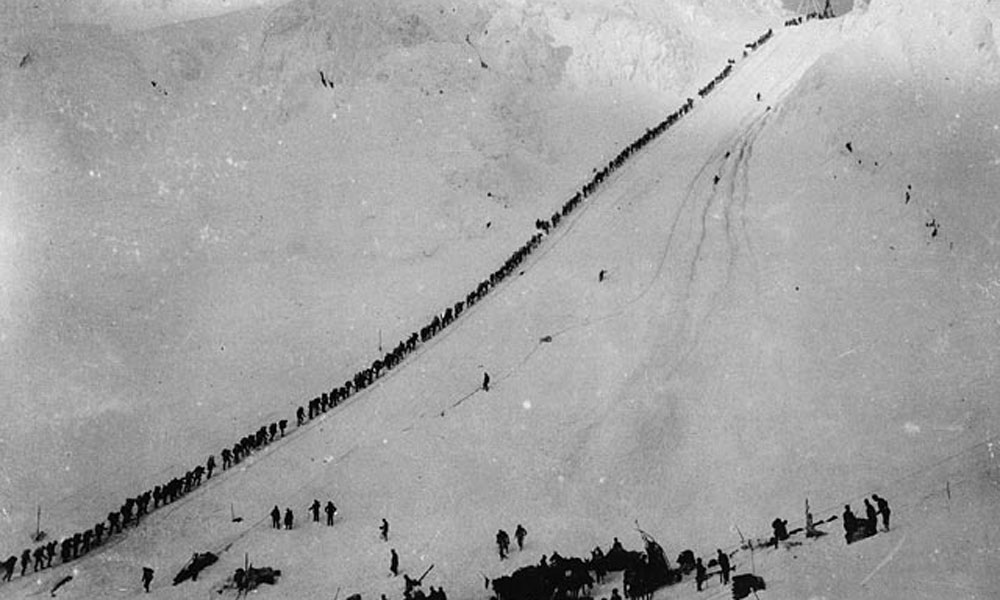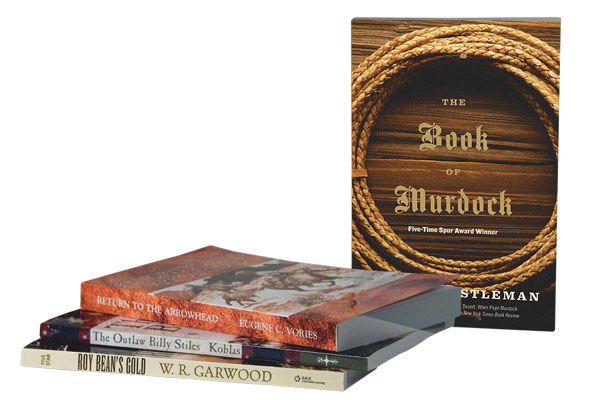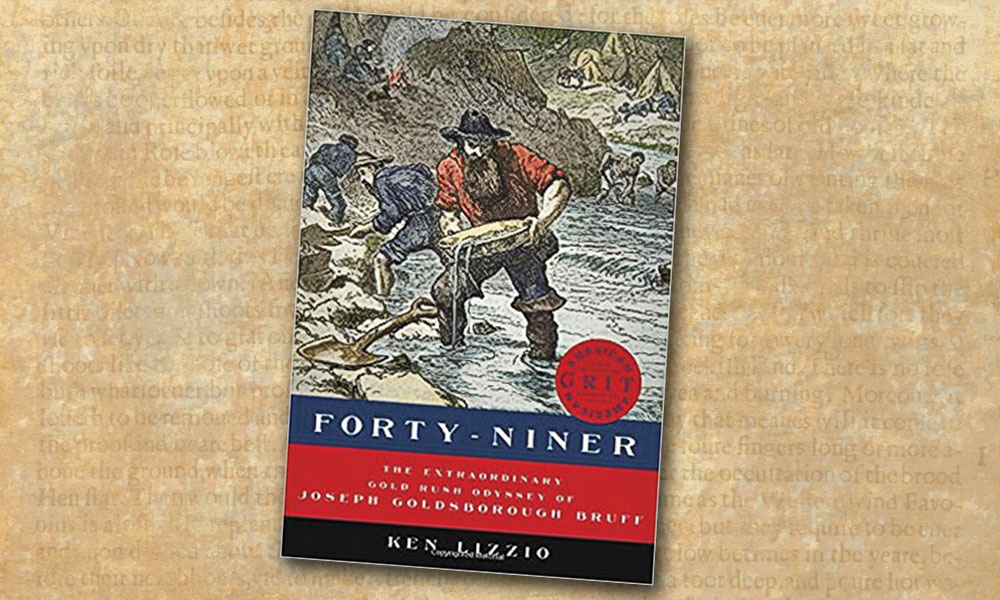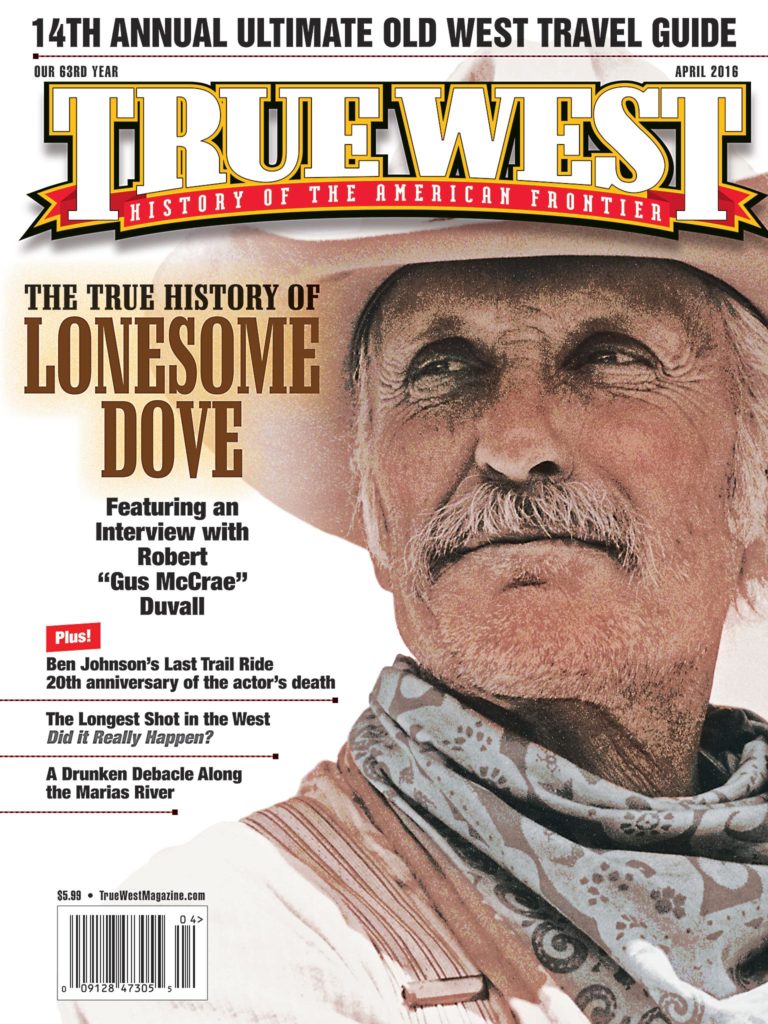
On August 16th, 1896 a prospector named George Carmack, his Tagish Indian wife Kate, her brother Skookum Jim and nephew Tagish Charlie were looking for gold along Rabbit Creek, a tributary of the Klondike River, when they found a bonanza in gold. Rabbit Creek would soon become famous as Bonanza Creek. Fearing other miners might take away an Indian’s right to stake a claim Carmack was listed as the discoverer. The next day he filed four claims the next day at the Canadian police station at Forty-Mile Creek. Word spread quickly around the Yukon River Valley and by the end of the month the entire creek had been claimed by miners.
Another prospector found sources of gold on Eldorado Creek a branch leading into Bonanza that would be even richer. Word didn’t reach the outside world until the following July when the first boats arrived in Seattle.
On July 17th, 1897 a weathered ship named Portland, arrived in Seattle with 68 minors toting a “Ton of Gold” Worth approximately $700,000.
Down the gangplank came one man with $50,000 in gold. He was followed by another with $35,000, and another with $20,000 and the richest of all, Frank Phiscator, came ashore packing $96,000 worth $2,687,520 in today’s dollars.
A publicity man working for the Seattle Chamber of Commerce, Erastus Brainerd sent press releases worldwide, calling the discovery worth at least a “ton of gold” and the rush to the Yukon was on.
To get there one went by ship from Seattle or San Francisco to Skagway or Dyea in the Alaska panhandle. Those who landed at Skagway had to traverse White Pass and from Dyea, the Chilcoot Trail some 30 miles to the Yukon Territory.
Soon after the rush began Canadian authorities, not wanting the prospectors to perish on Canadian soil where temperatures in the winter could drop to -58 Degrees F. required anyone entering the Yukon Territory to have supplies including a year’s supply of food plus camping equipment, tools and other essentials that added up to some 2,000 lbs. To transport their supplies up the steep trails to the Yukon some had brought dogs, horses, mules or oxen, while others carried their equipment on their backs or on sleds pulled by hand. Many had to make several trips before getting their entire pack to the top.
After getting to the Yukon Territory it was necessary to build a boat and wait for spring when the Yukon River thawed then float some 400 miles down to Dawson City. It was not a journey for the meek.
It was good while it lasted. A few got rich but most came home broke and empty-handed. The Klondike Gold Rush ended in 1899 after gold was discovered in Nome, Alaska. Even those didn’t hit pay dirt none could deny,
“They’d seen the Elephant.”






